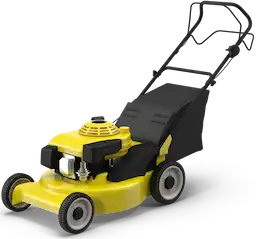The frequency of lawn aeration depends on various factors, including soil type, foot traffic, and lawn health. Generally, clay soils benefit from annual aeration, while sandy soils can be aerated every two to three years. High foot traffic areas require more frequent attention. Ideal timing falls in the spring and fall, aligning with grass growth periods for better recovery. Signs of compaction, such as water pooling or shallow root systems, indicate a need for aeration. Understanding these fluctuations can greatly enhance your lawn’s health and drainage. Uncover additional insights to help you maintain a thriving lawn.
How Often Should You Aerate Your Lawn?
The frequency of lawn aeration is influenced by several factors, including soil type, lawn usage, and overall health.
For instance, lawns with heavy foot traffic or clay soils may require annual aeration, while those with sandy or loamy soils might only need it every few years.
Understanding these variables is essential to determining whether annual aeration is necessary for your specific lawn conditions.
What Factors Affect Aeration Frequency?
Frequently evaluating various factors is essential in determining how often to aerate your lawn.
Soil type plays a vital role, as clay soils often require annual aeration due to compaction, while sandy soils may only need it every three to five years.
Moreover, lawn health and foot traffic influence aeration frequency, necessitating more frequent aeration for compacted or heavily used areas.
Should You Aerate Your Lawn Every Year?
How often should you aerate your lawn to guarantee ideal health and growth? The frequency of aeration depends on various factors, including soil type and usage.
Consider the following:
- Annual aeration for most lawns.
- Twice a year for clay soils.
- High-traffic areas may need multiple aerations.
- Sandy soils generally require aeration every 2-3 years.
Regular assessment is key to maintaining lawn health.
Signs Your Lawn Needs Aeration
Recognizing the signs of compacted soil is essential for maintaining a healthy lawn. Indicators such as water pooling, shallow root systems, and persistent footprints can highlight the need for aeration.
Moreover, avoiding common lawn care mistakes will further enhance the effectiveness of your aeration efforts, ensuring ideal growth and vitality.
How to Identify Compacted Soil
A variety of signs can indicate that your lawn is suffering from compacted soil, necessitating aeration to restore its health.
Key indicators include:
- Water pooling after rain or irrigation.
- Shallow grass roots leading to dryness.
- Visible footprints remaining on the lawn.
- Thatch buildup exceeding ¾ inch.
Recognizing these signs will help determine when you need to aerate for ideal lawn health.
Lawn Care Mistakes to Avoid
While many homeowners aim for a lush lawn, neglecting signs that indicate the need for aeration can lead to detrimental mistakes in lawn care.
Indicators such as visible footprints, water pooling, shallow roots, and excessive thatch highlight soil compaction.
Regularly monitoring these signs guarantees timely lawn aeration, promoting healthier grass growth and preventing long-term damage to your lawn.
When Is the Best Time to Aerate Your Lawn?
Timing is essential when it comes to aerating your lawn, as it directly impacts grass recovery and overall health.
For cool-season grasses, the ideal period is in the fall, while warm-season grasses benefit from aeration in late spring to early summer.
Understanding these timing nuances guarantees that your lawn receives the care it needs during its peak growth phases.
Optimal Aeration Timing for Cool-Season Grass
For ideal results, the best period to aerate cool-season grasses, such as Kentucky bluegrass and fescue, falls within the early weeks of fall, particularly from August to September.
This timing guarantees maximum recovery and growth. Consider these factors:
- Active growth period
- Thatch management
- Soil structure improvement
- Enhanced nutrient absorption
Avoid aerating during winter or summer heat for the best outcomes.
Aerating Warm-Season Grass
The ideal period for aerating warm-season grasses, such as Bermuda and St. Augustine, is late spring to early summer when soil temperatures reach 65°F.
It’s recommended to aerate every year, particularly in lawns with heavy foot traffic or compacted soil.
This timing promotes best recovery during active growth, ensuring a healthy lawn while avoiding stress during extreme heat or drought conditions.
How Lawn Aeration Can Improve Your Lawn’s Health
How can lawn aeration transform your yard into a thriving green space?
Aeration is essential for a healthy lawn, enhancing root growth and promoting nutrient absorption.
Key benefits include:
- Improved air and water penetration.
- Increased turf density and health.
- Reduced thatch and pest risks.
- Enhanced microbial activity.
Regular aeration creates an ideal environment for robust grass growth and resilience.
Can You Aerate Your Lawn Too Much?
Over-aeration can pose significant risks to your lawn’s health, leading to soil disruption that stresses grass and hinders growth.
Recognizing the signs of over-aeration, such as patchy grass and increased pest susceptibility, is essential for maintaining a vibrant lawn.
Implementing best practices to determine the appropriate frequency of aeration will help avoid these detrimental effects.
Signs of Over-Aeration
Excessive aeration can lead to detrimental effects on lawn health, making it vital for homeowners to recognize its signs.
Key signs of over-aeration include:
- Increased soil erosion
- Excessive thatch buildup
- Shallow root systems
- Patchy grass or persistent compaction
Monitoring these indicators is essential to guarantee your lawn remains healthy and thriving without the adverse effects of over-aeration.
Best Practices to Avoid Over-Aerating
While ensuring your lawn remains healthy and vibrant, it is essential to adopt best practices that prevent the risks associated with aerating too frequently.
Monitor soil conditions and grass health to determine if you need to aerate more often. Generally, healthy lawns benefit from annual aeration, while over-aerating can stress turf and hinder growth.
Assess your lawn’s needs to maintain ideal health.
Need Help with Lawn Aeration? Contact Lawnguru Today!
If you’re unsure about how often to aerate your lawn, seeking professional assistance can make all the difference.
Consider the following when you hire a lawn expert:
- Assessment of soil type
- Frequency recommendations based on usage
- Core aeration services for peak results
- Guidance on watering and overseeding
Contact Lawnguru today to guarantee your lawn receives the care it deserves!


